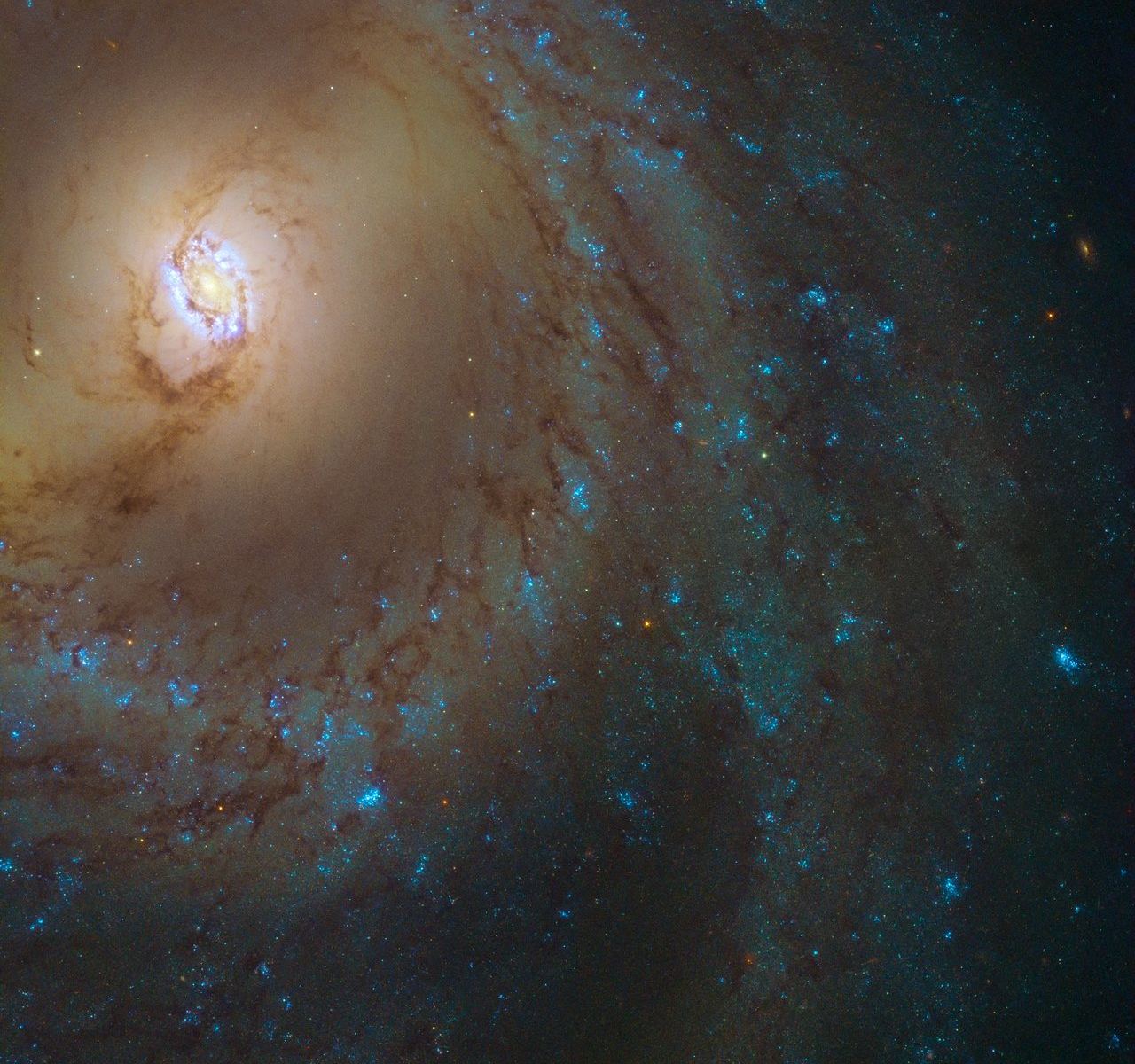In the past century, astronomers have learned a great deal about the cosmos and our place in it. From discovering that the Universe is in a constant state of expansion to the discovery of the Cosmic Microwave Background (CMB) and the Big Bang cosmological model, our perception of the cosmos has expanded immensely. And yet, many of the most profound astronomical discoveries still occur within our cosmic backyard – the Milky Way Galaxy.
Compared to other galaxies, which astronomers can resolve with relative ease, the structure and size of the Milky Way have been the subject of ongoing discovery. The most recent comes from the Max Planck Institute for Extraterrestrial Physics (MPE), where scientists have found a previously undiscovered inner ring of metal-rich stars just outside the Galactic Bar. The existence of this ring has revealed new insights into star formation in this region of the galaxy during its early history.
Determining the structure and size of the Milky Way galaxy has always been marred by the fact that we are situated within the Milky Way’s galactic disk, close to one of its spiral arms. From this vantage point, stars are obscured by dense clouds of gas and dust, especially towards the center of the Milky Way. This has made it particularly difficult to determine the structure of the inner Milky Way.

One enduring mystery about our galaxy is whether or not it had any star-forming inner rings, which have been seen in other disk galaxies. Luckily, scientists at the MPE spent the past decade combining data from various observation campaigns – including the APOGEE survey and the Gaia Observatory – with advanced computer simulations. The result was a state-of-the-art model of the inner Milky Way that revealed a slow bar with a peanut-shaped bulge. This bulge is populated by stars that formed four to nine billion years ago, with a peak in age between six and eight billion years.
The APOGEE survey is a large-scale, stellar spectroscopic campaign conducted by the Sloan Digital Sky Survey (SDSS), located at the Apache Point Observatory in New Mexico. This survey was conducted at near-infrared wavelengths, which allows for observations that would not be possible in optical light. In particular, APOGEE’s IR observations allow it to see through the dusty regions of the Milky Way, such as the disk and the bulge.
This allowed the MPE team to determine the element abundances, positions, line-of-sight velocities, and approximate ages of all the stars in the newly-observed bulge. Meanwhile, the data obtained by the ESA’s Gaia mission provided accurate measurements of the positions and proper motions of these stars. The team then combined all of these observations with a model they created of the workings of the inner Milky Way. As Shola M. Wylie, a Ph.D. student at MPE and lead author of the study, explained:
“We integrated more than 30 000 stars from the APOGEE survey with additional data from Gaia in our Milky Way bar-bulge potential to obtain the full orbits of these stars. And with these orbits, we can effectively see behind the galactic bulge as well as other spatial regions not covered by the surveys. Around the central bar, we found an inner ring structure that is more metal-rich than the bar and where the stars have younger ages, around 7 billion years.”

To separate the stars in the ring and the bar structures, the team observed how much their orbits deviated from a circle (i.e., their eccentricity). From this, they found that the stars in the ring are younger and more metal-rich than the stars in the bar and are more concentrated towards the Galactic plane. This suggests that stars in the stellar ring must have continued to form from inflowing gas after the bar was in place.
Therefore, astronomers can use the age of the inner ring stars to look back at the formation history of the Milky Way. Based on the average age of the stars, the MPE team estimates that the Galatic bar formed at least 7 billion years ago. At present, it’s not clear if there is a connection between the newly discovered inner ring and the galaxy’s spiral arms and whether gas is currently funneled inwards to a star-forming thin inner ring, as is seen with other spiral galaxies.
With next-generation telescopes becoming operational, more detailed galactic surveys will be possible. When combined with augmented models (which will be possible using more sophisticated software), this data will allow astronomers to learn more about how the ring structure transitions to the surrounding disk in the Milky Way. The study that describes their findings, titled “The Milky Way’s middle-aged inner ring,” recently appeared in the journal Astronomy & Astrophysics.
Further Reading: Max Planck Institute for Extraterrestrial Physics

